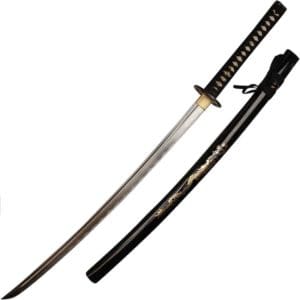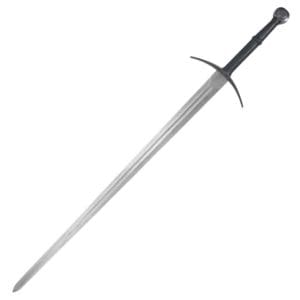Getting to Know the Parts of Your Sword
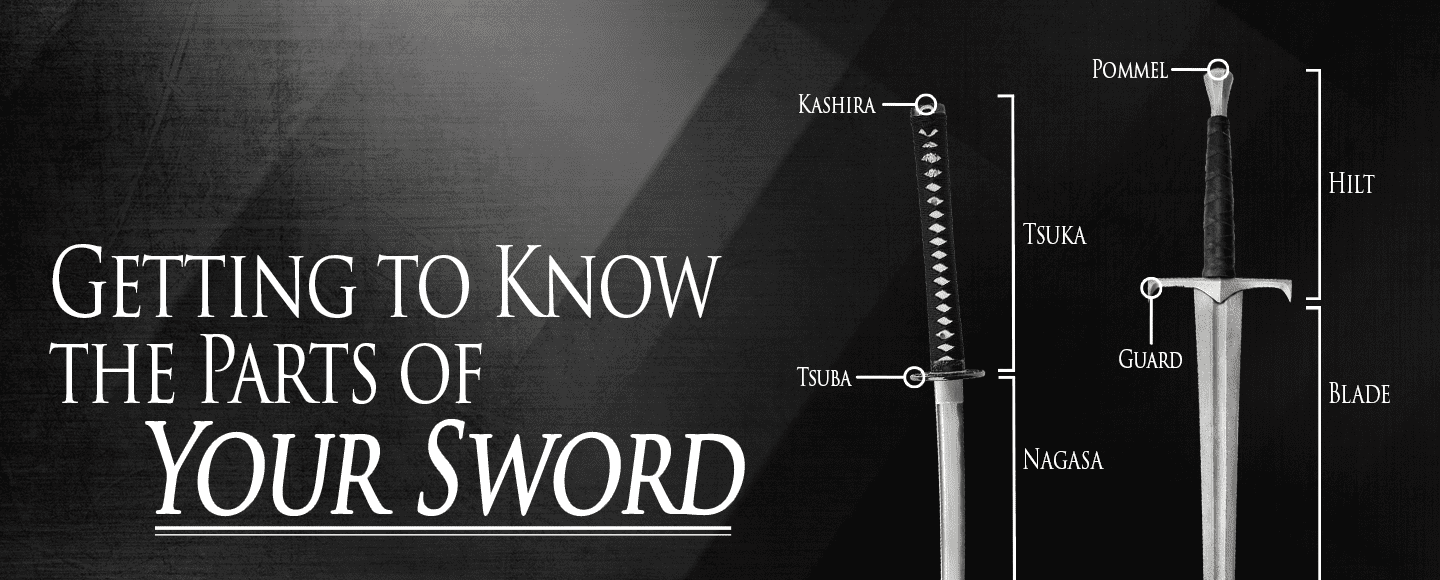
Have you read a sword description but not sure what each term means? Do you want to get to know your sword? Here, we go through the different parts of a sword, explaining the terms used for European and Japanese swords.
What are some blade terms to know?
Let’s get to know the parts of a sword blade. There are many terms relating to this section of a sword. Many, but not all, European and Japanese terms will overlap for certain parts of a blade.
Blade Cross-Sections
To begin with, there are terms relating to the cross-section of a blade. The European terms will focus on the shape of the cross-section. For example, for a European sword, a diamond cross-section is common. A hollow ground cross-section will have concave sides between a central ridge and the edges. Hollow ground cross-sections are popular.
Meanwhile, the Japanese terms will often focus on the location of hard, medium, and soft steel in the blade. These are hagane, kawagane, and shigane, respectively. The differences in steel contribute to the strength and capabilities of the blade. A cross-section will be called a shinogi-zukuri. The shinogi specifically is the ridge between the cutting edge and the rest of the blade.
A large part of the cross-sections for European blades is the existence or not of a fuller. A fuller is a groove that lightens the weight of the blade without compromising its strength. The Japanese term for this groove is bo-hi.

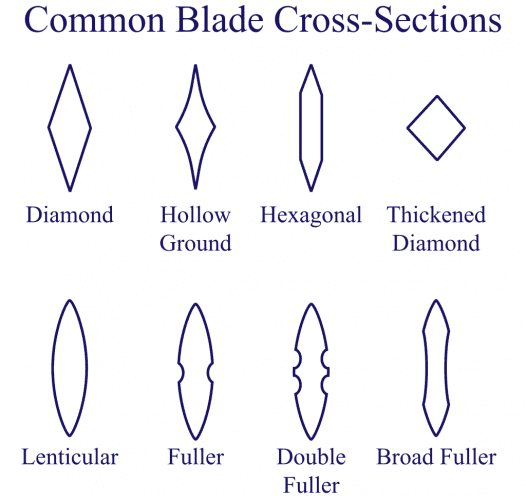
Tangs and Tempering
Another important part of a sword is the tang. The tang of the blade is the part of the blade that enters the handle. It helps to keep the blade from separating from the handle. A full tang helps to make a sword functional. The Japanese term is nakago.
In addition to a full tang, tempering also plays a part in a sword’s functionality. Tempering allows the blade to balance between a hard edge and flexibility without breaking. A temper-line is a visible marker of the tempering process. The Japanese term for temper line is hamon. There are multiple Japanese terms for the appearance of the hamon. A hamon usually runs the length of the blade. The Japanese term for the length of the blade is nagasa.
Japanese-Specific Blade Terms
There are other Japanese-specific terms for blade parts. They do not have a specific European equivalent. For example, a commonly used Japanese term is the kissaki. It is the tip of the blade. There are three terms in Japanese for tip length: ko, chu, and o. The shortest is ko, and the longest is o. Another term that is specific to Japanese swords is the term sori. Sori refers to the curvature common in Japanese swords.
Another term used more commonly with Japanese sword is blade collar, or habaki. This will often be a section of brass wrapped around the blade before the tsuba. There are many other terms for the parts of a Japanese blade, but we have covered the ones that we will most commonly use at Medieval Collectibles.
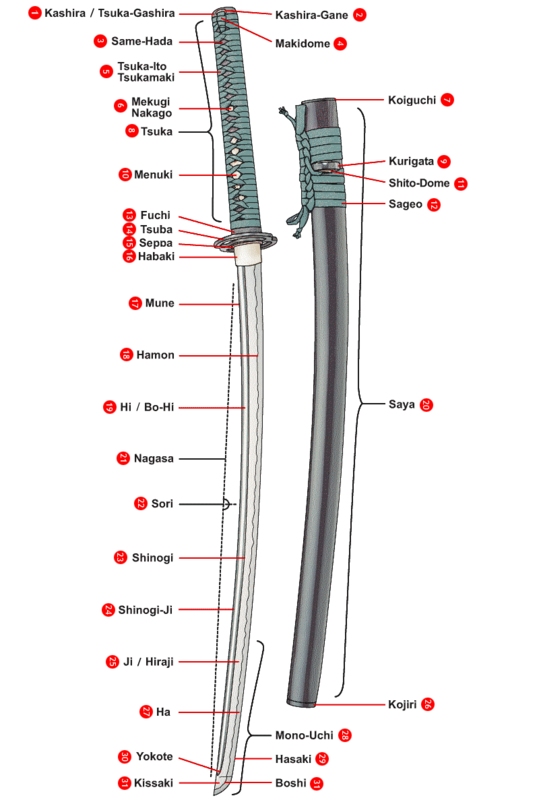
What are some sword hilt terms to know?
Now, let’s move on to getting to know the parts of a sword’s hilt, or tsuka. The most common parts are the crossguard, grip, and pommel. Starting with the crossguard, it is a piece of metal that is perpendicular to the blade. The crossguard is meant to protect the wearers hand from an opposing sword strike. The Japanese term for a guard is tsuba. It works similarly. A crossguard can be straight or curved. Some European guards are D-shaped. It blocks blows to the grip as well.
The grip is where the wielders hand grasps the hilt. For a Japanese sword, the grip has the same name as the overall hilt, or tsuka. The grip will have a cord wrapping, or ito, and metal fittings. One of these is called menuki. It will often have an animal or thematic design.
A hilt will end with a pommel, or kashira. For a Japanese sword, the kashira is meant more as a way to finish off the handle, especially the ito. Meanwhile, on a European sword, a pommel often works as a counterweight. It helps with the swords balance, which effects how a swordsman wields the sword.
When it comes to Japanese swords, there are other parts such as the fuchi and seppa. The fuchi is a piece of metal that borders the tsuba and the handle. Seppa are spacers on both sides of the tsuba. The seppa and fuchi can contrast or add additional ornamentation to the look of a sword’s hilt.
What are some scabbard terms to know?
Let’s get to know another important part of a sword: the scabbard. While not every sword that we offer comes with a scabbard, many do. For a Japanese sword, the scabbard is called the saya.
On a European-style scabbard, there is often a chape and throat. The chape is the area of the scabbard that covers the tip of the blade. Meanwhile, the throat of the scabbard is the end that meets the guard of a sword. For a Japanese sword, the corresponding terms for a chape and throat are koijiri and koiguchi, respectively.
In addition, a Japanese saya will have a wrapping called sageo. It will usually be a cord wrapping that matches the ito on the sword handle. Historically, it helped to secure the saya to a warrior’s belt. A kurigata is a loop on the saya that the sageo wraps around and secures onto.
Summary
While there are many terms for swords and sword parts, we have run through the most common terms that you will find in our sword descriptions. We most commonly use the European terms for our swords and many of our daggers as well. Japanese terms will only show up with our katanas, wakizashis, tantos, and other Japanese weapons. We hope that we have helped you understand a bit more about the parts of your sword.
Image Sources:
Parts of a Japanese Sword: Wiki Creative Commons
European Blade Cross-Section: In the Public Domain
Japanese Blade Cross-Section: In the Public Domain

